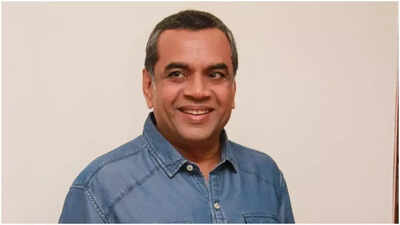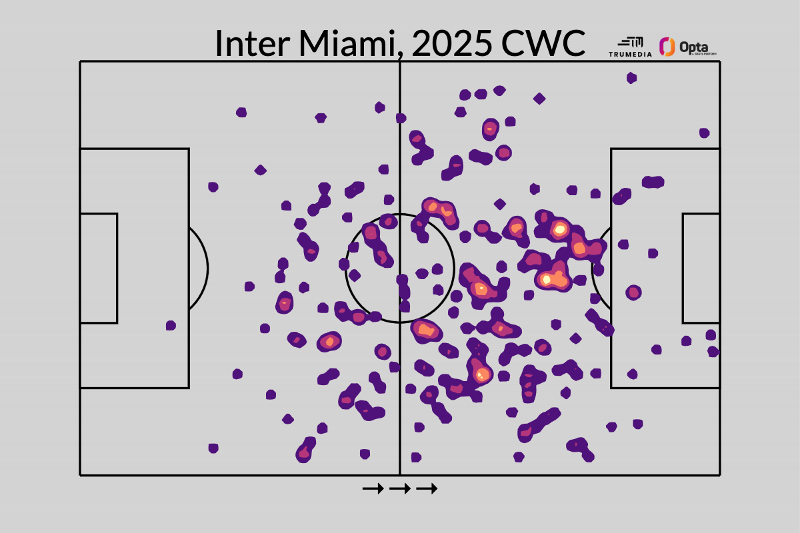Foundation is not a show that lends itself to casual viewing. Its nuances and details, not to mention its constantly shifting settings, mean you must pay close attention to understand what’s happening. It’s also not really a show you can decide to start watching midway through, something to consider ahead of its third season premiere.
But the rewards are worth it: it’s wildly entertaining—thanks to its writing, layered world-building, and performances—and while it’s a show that deals with very serious themes, Foundation also knows when to lighten up. Even as humanity faces extinction, it makes room for moments of levity and romance, as well as surprising twists that subvert audience expectations. That includes those who’ve read Isaac Asimov’s Foundation books, which inspire but don’t dictate the events of the series.
Foundation also makes it easier on viewers whenever it can. This is a plot-heavy show with a lot of characters to keep track of, so it makes use of helpful narration as well as on-screen text to let us know where we are on the timeline. It also makes things very clear when we’re visiting a new planet or region—something season three does a lot of, efficiently showing us just how much this story has expanded since season one.
Season three picks up 152 years after season two. Some things look the same: Empire is still ruling the galaxy with its Cleon clones and ancient android Demerzel (Laura Birn); Foundation, now relocated to New Terminus, counts down the days until its creator Hari Seldon (Jared Harris) next emerges from his mysterious vault. The Second Foundation, created in secret, has been training psychic warriors. And the Prime Radiant, Seldon’s compact supercomputer, is still predicting the fall of civilization, with an extended dark age to follow.
That last bit is obviously worrisome, but at this point, Seldon’s doom-filled prophecy—tabulated using his “psychohistory,” used to envision the fates of large populations—has been out there for centuries. As we saw in season two, Demerzel and the Second Foundation both have access to the Prime Radiant and can keep tabs on psychohistory’s progress. Demerzel keeps her Prime Radiant tucked in her chest, almost where her heart would be.

The next big event is known to be the Foundation’s Third Crisis. But Seldon’s followers are no longer the scrappy colonists we met in seasons one and two; everyone, especially the leadership, has prospered. A civil war of sorts is brewing between Foundation’s ruling elite and Foundation’s merchant traders, who are led by the wealthy descendants of season two character Hober Mallow.
But while Seldon’s plan, which had veered off course in season two, is back on track, the Prime Radiant is now hinting that instead of merely a temporary period of struggle, the road ahead may lead to something far more permanent. This lends a layer of frantic dread to the feeling that things are rapidly falling apart—something that’s exponentially enhanced once the Mule (Pilou Asbæk) starts rattling his saber.
A self-styled pirate warlord who uses his psychic gifts to mind-control any opposition, with unimaginably cruel results—soldiers turning on each other with murderous friendly fire, people biting off their own fingers or willingly drowning themselves—the Mule’s arrival was foreseen by Seldon’s protégé, Gaal Dornick (Lou Llobell). She’s also psychic, and Foundation has long been teasing their predestined battle. The Mule’s the reason Gaal has endured multiple extended cryosleep periods. She needs to be alive at the right time, because she believes she’s the only one who can stop him.
As Foundation sets up these separate yet connected narratives, there’s lots of payoff for viewers who’ve become invested in the show. Things are barreling toward a face-off that’s now years in the making—centuries in the making, if you’re going by Foundation’s fluid approach to time—but the pacing carefully makes room for all the different characters, all of whom are new aside from Seldon, Gaal, and Demerzel.
That includes the three Cleons, who look familiar but are all-new, all-different versions of the same man we’ve met over and over again across Foundation’s run. Brother Dusk (Terrence Mann) is dreading his imminent “ascension”—he’ll soon be incinerated to make way for a new baby Brother Dawn—while the current Brother Dawn (Cassian Bilton) will become Brother Day, the Cleon with the most power. That’s problematic because the reigning Brother Day (Lee Pace) has completely fucked off from his official duties, preferring instead to get high, gamble, and laze around with the concubine he’s chosen as his permanent companion.
Season three’s Cleons are by far the most complicated yet—though season two’s Brother Day was definitely a piece of work, and his actions still reverberate 150 years after the fact. These men are clones of the first Emperor Cleon, but as we’ve learned in previous seasons, genetic irregularities have been introduced that mean they aren’t actually identical to him or to each other.

Dusk gets his meatiest arc yet as he faces his unavoidable end with a mix of bitterness, rage, and melancholy; Dawn, who has the makings of a gifted politician, expands on what we’ve seen previous versions of the character do by bravely pushing the boundaries of what Empire is capable of.
But Day emerges, yet again, as one of the season’s standouts. Pace appears to be having an absolute blast tearing through lines like “Welcome to my filth!”—but despite slovenly appearances, this is no one-note Cleon, and his storyline is full of wild surprises.
The Mule is also extremely memorable; after all that build-up, we see immediately—in the very first scene of the season premiere—the horrors that he’s capable of, as well as the glee he takes in committing them. Gaal putting herself to sleep for generations to prepare for their meeting suddenly makes a lot more sense. Asbæk resists playing the Mule as merely a scenery-chewing villain with a terrifying grin; there’s certainly some theatricality to the character’s evil, but there’s also a creepy sadness lurking beneath as he promises his victims how much they’re really going to love him.
But this is an Asimov story, and it’s no surprise Foundation’s best character—its most complex, most frustrating, and most frustrated—is Demerzel. She’s the last remaining robot after humanity’s victory in the ancient Robot Wars, but for the most part only the Cleons know her secret. (Everyone else assumes she’s a clone, like the rulers are.)
In season two, Foundation explored her backstory in depth, including how the first Emperor Cleon found her and tasked her to serve only his interests. Her driving force is Empire above all. She’s the real puppeteer of the regime, and while she’s done some villainous things (and she can be terrifying when she wants to be), she’s not a villain. She’s simply powerless to act freely, much less defy the directive she’s been given.
In season three, Demerzel’s dilemma reaches paradoxical levels as she ponders existence without Empire. “If I outlive my programming, I don’t know what I am,” she realizes—and for the first time in a long time she considers what strange changes her own future might hold.
That existential predicament is an example of what gives Foundation an extra edge over many other sci-fi shows. It’s a story about the burdens that accompany being able to predict the future, especially a potentially disastrous one. But it’s also about the various fascinating individuals—a psychotic psychic, a conflicted robot, a rebellious emperor, a cranky hologram, a woman who’s lived for hundreds of years—who become caught up in trying to shape what’s to come. Taken together, it’s truly a fantastic voyage.

Foundation season three premieres July 11 on Apple TV+. It then runs weekly through September 12.
Want more io9 news? Check out when to expect the latest Marvel, Star Wars, and Star Trek releases, what’s next for the DC Universe on film and TV, and everything you need to know about the future of Doctor Who.










.jpg?w=700&c=0)






.jpg?w=700&c=0)





































